
Nothofagus moorei, commonly known as Antarctic beech, is an important Gondwana relict of the rainforests of the southern hemisphere. It occurs in wet, fire-free areas at high altitude in eastern Australia.
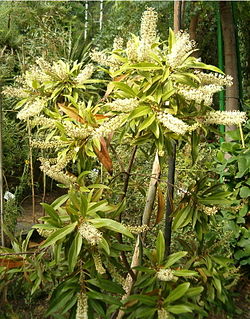
Buckinghamia is a genus of only two known species of trees, belonging to the plant family Proteaceae. They are endemic to the rainforests of the wet tropics region of north eastern Queensland, Australia. The ivory curl flower, B. celsissima, is the well known, popular and widely cultivated species in gardens and parks, in eastern and southern mainland Australia, and additionally as street trees north from about Brisbane. The second species, B. ferruginiflora, was only recently described in 1988.

Grevillea hilliana, of the plant family Proteaceae, is a species of Australian endemic trees known by many common names including white yiel yiel, white silky oak, grey oak, Hill's silky oak, and yill gill.
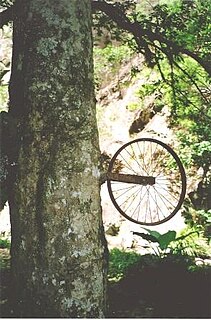
Syzygium moorei is a rare sub tropical rainforest tree, growing on volcanic soils in the Mount Warning area of north east New South Wales and south east Queensland, Australia. Common names include coolamon, watermelon tree, durobby and robby; it is also called "rose apple" but this can refer to many species of Syzygium.

Diospyros pentamera is a common rainforest tree in the Ebony or Persimmon family (Ebenaceae) growing from near Batemans Bay in New South Wales to the Atherton Tableland in tropical Queensland, Australia. It is commonly known as the myrtle ebony, black myrtle, grey plum or grey persimmon.

Guioa semiglauca, known as the guioa or wild quince, is a rainforest tree of eastern Australia. It grows from Kioloa near Batemans Bay in southern New South Wales to Eungella National Park in tropical Queensland. It grows in many different types of rainforest, particularly common in regenerating areas and on sand in littoral rainforest.

Celtis paniculata, commonly known as tripewood, silky keltis, silky celtis, native hackberry, native celtis, Investigator tree or whitewood, is a rainforest tree native to parts of Malesia, Melanesia and Australia.
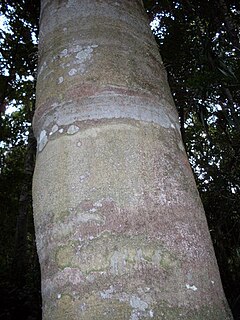
Symplocos stawellii, or the white hazelwood, is a rainforest tree growing in eastern Australia. It often grows along creeks in gullies, in tropical and sub-tropical rainforests. The natural distribution is from Gerringong Creek in the upper Kangaroo Valley of New South Wales to the Atherton Tableland in tropical Queensland. It also occurs in New Guinea.

Pennantia cunninghamii, known as the brown beech, is a rainforest tree of eastern Australia. The range of natural distribution is from Clyde Mountain near Batemans Bay in southern New South Wales to Atherton in tropical Queensland.
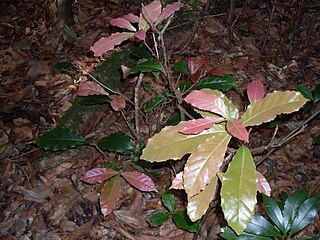
Sloanea australis, commonly known as the maiden's blush, is a rainforest tree of eastern Australia. The range of natural distribution is from near Batemans Bay in southern New South Wales to Cape Tribulation in tropical Queensland. The habitat of Sloanea australis is various types of rainforest; such as littoral, warm temperate, montane rainforest, sub tropical, and tropical rainforests. Often growing in particularly moist areas, such as next to streams.
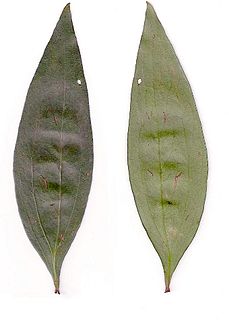
Stenocarpus salignus, known as the scrub beefwood is an Australian rainforest tree in the family Proteaceae. Found in warmer rainforests on the coast and ranges. It is often found in warm temperate rainforest on poorer sedimentary soils, or on volcanic soils above 750 metres above sea level. It was originally described by the botanist Robert Brown in 1810.
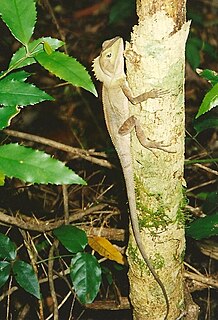
The Boorganna Nature Reserve is a protected nature reserve located northwest of Taree on the Comboyne Plateau in New South Wales, Australia. The 396-hectare (980-acre) reserve, managed by the NSW National Parks & Wildlife Service, was gazetted in 1904 and is the second oldest nature reserve in the state. The reserve features various forest types, including stands of sub tropical rainforest of which the large rosewood, yellow carabeen and small leaf fig are particularly noteworthy. The reserve is a remnant of the former extensive rainforest on the Comboyne Plateau. The plateau was cleared between 1900 and 1925. Australian red cedar was logged in the area in the nineteenth century. Originally proposed to be part of the world heritage rainforest group. The exploration, knowledge, uses and history of this area by Indigenous Australians is not well known in the present day. Boorganna Nature Reserve was proposed, but rejected for inclusion on the UNESCO World Heritage, due to being geographically isolated from other rainforests in the group.

Symplocos thwaitesii, or the buff hazelwood, is a rainforest tree growing in eastern Australia. Seen in tropical, sub-tropical and warm temperate rainforests, often in gullies. Occasionally it grows in cooler situations such as at Monga National Park.

Diospyros mabacea, the red-fruited ebony is a rare rainforest tree in the ebony or persimmon family growing in north eastern New South Wales. Listed as endangered by extinction.

Numinbah Nature Reserve is a protected nature reserve that is located in the Northern Rivers region of New South Wales, in eastern Australia. The reserve was gazetted in December 1981 with a further addition made in 1989 to make the reserve to its current area of 858 hectares. The reserve is situated north-east of the rural locality of Numinbah, and south of the Queensland town of Springbrook and defines part of the state border between New South Wales and Queensland.
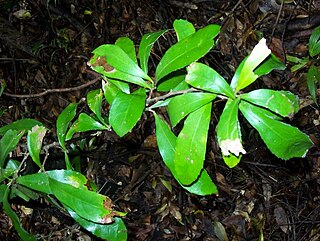
Helicia glabriflora is a species of rainforest shrubs or small trees occurring in eastern Australia. Common names include smooth or pale helicia, pale, leather or brown oak. They grow naturally in a variety of different rainforest types from the Illawarra, New South Wales to the Townsville area, Queensland. Of all the global diversity of approximately one hundred Helicia species, this one species naturally grows the furthest south, in the Minnamurra Rainforest and the Robertson area, Illawarra, New South Wales, there observed more on the relatively fertile basalt and alluvial soils.

The Susan Island Nature Reserve is a protected nature reserve containing Susan Island, a river island, that is located in the Clarence River, in the Northern Rivers region of New South Wales in eastern Australia. The 23-hectare (57-acre) reserve is situated near Grafton. The island and reserve is a rare 16.5-hectare (41-acre) example of sub tropical lowland rainforest.

Archidendron muellerianum, the veiny lace flower or small-flower laceflower, is a rainforest tree with a restricted range in eastern Australia. It is a rare plant, with a ROTAP rating of 3RCa.

Pouteria cotinifolia is an Australian tree in the family Sapotaceae. The common names include small-leaved plum, yellow lemon and small-leaved coondoo. It occurs in the drier rainforests from the Richmond River, New South Wales to the Wenlock River in tropical Queensland.

Mount Royal is situated at the southern end of the Mount Royal Range in the Barrington Tops region of eastern Australia. It is part of the World Heritage Gondwana Rainforests of Australia.





















